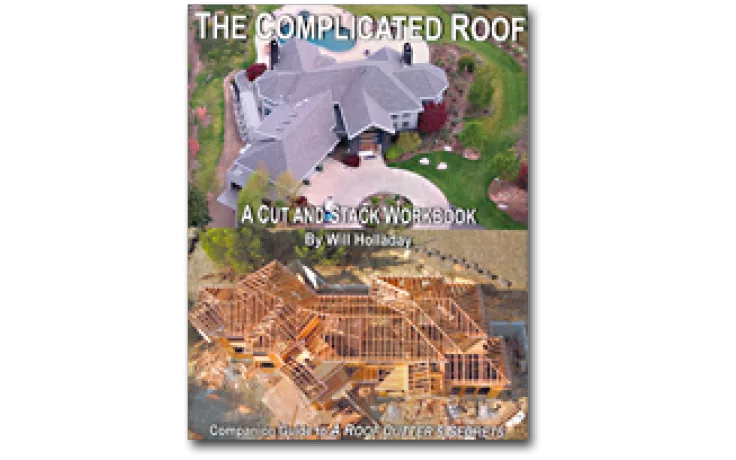Hail: Yes! It Can Damage a Roof
Every year building owners file a large number of property loss claims resulting from hail damage to a roof system. In fact, the percentage of roof damage from hail is so large that it has spawned a cottage industry of contractors and consultants who chase these types of storms throughout the country in search of roof work. Roof damage from hail force is typically the result of improper application or inadequately manufactured materials.
How to Inspect for Hail Damage
Hail force damage is often difficult to find because it is not easily detectable in all roof membranes. It is often only visible within or below the roof surface. Typically, the use of magnifying instrumentation or microscopic analysis is required to clearly identify the damage. Damage to single-ply membranes is often illustrated through fractures that occur at the bottom of the sheets. Damage to built-up roof membranes may occur in the interply layers, and damage to some systems-such as SPF and PVC-can be identified at the surface layer in severely damaged conditions.Small hailstones should not damage the membrane. However, it has happened. The best way to determine the size of the hail is by inspecting the metal components of rooftop equipment or copings. Indentations from hail over the metal coverings can be measured to determine the actual hail size. It is also a good idea to investigate adjoining roof areas or surrounding buildings to determine if the same storm produced similar damage.
Certain roof membranes are negatively affected by cold weather conditions. A combination of cold weather and rain can significantly cool the membrane surface and make it brittle, which makes it more susceptible to damage from the force of hail.
The Effects of Hail on Low-Slope Membranes
All commercial low-slope roof membranes can be damaged by hail to some extent. Depending on the type of membrane and the size of the hail, roof damage can be sustained in the form of punctures or holes. Damage can occur from improper installation or material defects. The roof area should be inspected after every hailstorm to ensure that no damage has occurred.Hail damage to built-up roof systems typically occurs due to improper application of surfacing aggregate. Aggregate that is not evenly distributed throughout the roof area (bare spots) or is applied in inadequate amounts renders the membrane vulnerable to hail force damage. As previously noted, the damage typically occurs at the interplies due to the force of the impact.
Hail damage to SPF roofs largely results from improper application. Inconsistent application, which results in uneven distribution of foam throughout the roof area, creates vulnerable points in the system for hail impact damage. Properly applied (thicker) areas are more likely to restrict impact than the improperly applied (thinner) areas. The lower density of foam in the inadequately applied areas reduces the compressive strength of the material and increases the probability of damage from hail force impact.
The most vulnerable roof systems to hail force damage are single-ply membranes. These types of membranes are susceptible because they typically do not employ protective surfacing components or the redundancy of materials that other conventional low-slope roof systems provide. Impact resistance is limited to a single membrane layer. Premature deterioration of the material can also contribute to hail force damage; many single-ply membranes-particularly thermoplastics-have a tendency to harden and become brittle in colder temperatures. This type of material deterioration can be identified by taking samples from exposed field areas and from unexposed laps at covered seams. Comparative studies of these samples will indicate the differences in the physical properties of the membrane. The vulnerability of unreinforced PVC in colder temperatures is well documented in this industry.
How to Avoid Hail Damage
The best way to avoid hail impact damage on low-slope roofs is by installing adequately manufactured materials in accordance with proper application procedures. The durability and puncture/impact-resistance of a membrane material is an important criterion of membrane selection, particularly in hail-laden regions. The impact resistance standards for membranes that are currently enforced in the southern Florida building code may soon be enacted in all hurricane regions, due to significant membrane damage from projectiles during these windstorms. Similar codes may be considered in hail-laden regions. It is very likely that that the insurance companies that are paying millions of dollars in hail force damage on an annual basis will lobby for these types of requirements.Some hail force damage may occur due to the inherent characteristics of the applied membrane. The only defense against these situations is a combination of proper application procedures and the addition of protective surfacing components over vulnerable membranes. Proper application procedures include accurate and even distribution of aggregate on built-up roof systems and proper foam distribution in SPF systems. On single-ply applications it is critical that a durable (higher mil thickness), impact-resistant (reinforced) membrane is installed. In hail-prone regions additional surfacing components, such as pavers or ballast, may be considered to provide further protection.
In addition to these items, roofing contractors should be wary of the litigious times that we live in. Insurance companies have tried to recover their property damage losses through subrogation. This is the act of litigating against a third party in efforts of recovering monies lost from property damage settlements. The insurance companies pay the building owner for damages and then file suit against (what they perceive to be) the responsible party of the damage. In cases of improper application the roofing contractor is the main target. Material manufacturers are held liable if material damage is considered premature. This is another reason to stress the importance of proper application to your crews in the field.
Looking for a reprint of this article?
From high-res PDFs to custom plaques, order your copy today!



